How to diagnose and treat downer cows
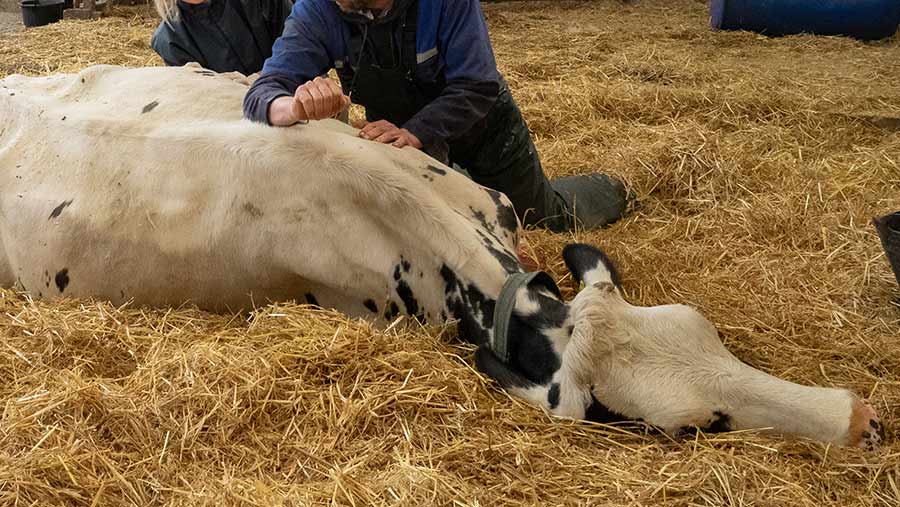 © Kathy Horniblow
© Kathy Horniblow Getting a down cow back up on her feet as soon as possible after she collapses is the surest way to put her on the road to recovery, which makes prompt diagnosis and fast treatment vital.
Vet Anna Patch of Shepton Vets says delaying treatment can result in a down cow becoming a cow that remains down for a long period of time – typically more than 24 hours.
These individuals are the ones farmers will term “downer cows”.
To prevent problems from escalating, identifying the primary cause of a cow going down should be the priority. These tend to fall into three categories:
Below, she gives advice on how to spot and treat the different causes.
Trauma
This includes a number of things, from broken legs to a dislocated hip or nerve damage after calving.
What are the signs?
- Cows often go down suddenly
- Limbs often held in unusual positions
- Cow may have been bulling recently or just calved
- She will usually be bright, other than the fact she can’t get up
- If there’s nerve damage, her tail might be paralysed/ floppy
- She may have loss of sensation in the limbs
- Her back feet may be knuckled – a sign of nerve damage after calving
- Lifting the cow with a hoist (see box) and manipulating the limbs can be a good way to assess the problem. Work your way up each leg and manipulate each joint – is one leg shorter than the other, or is there any crunching?
- Due to a cow’s weight, secondary muscle and nerve damage can quickly set in as soon as a cow goes down, regardless of the primary cause of her collapsing.
Treatment
- Ask yourself if you have the time and facilities to treat and nurse her adequately to give her a good chance of getting up. What are the long-term implications for the cow? If a leg is broken for example, putting her down might be the best option.
- When the decision is unclear, get a second opinion from the vet.
- The decision will affect treatment. Consider medicine withdrawal as this will affect whether it is possible to get a casualty slaughter certificate. Speak to your vet about non-steroidal anti-inflammatories (NSAIDs) with short withdrawals if this is the case.
- When nursing a cow with trauma, treatment will centre around NSAIDs and housing her on a deep-bed straw yard.
- If she has done the splits, use shackles, but only if her back legs have gone outwards, not if they’ve gone backwards (in this instance they won’t help).
- Cows with injuries not involving a break or dislocation should be lifted (see box) three or four times a day to maintain good blood flow.
Metabolic
This tends to be milk fever (low calcium), but can also include low magnesium or phosphate – although less common.
What are the signs?
- Milk fever is most common 12 hours after calving.
- Cows will have a low body temperature and cold extremities (such as the ears).
- Cow may have been wobbly before she went down.
- A “swan neck” that’s bent round can be a sign of milk fever.
- Low phosphorus can also cause a cow going down. These cows tend to almost get up and sit like a dog. They can also be low in calcium.
- If a cow is on spring grass, collapses and is thrashing around – it could be staggers (low magnesium).
- If it’s unclear as to the cause, contact your vet to get a blood sample taken.
Treatment
Milk fever
- Give one bottle of calcium in a vein – ideally the jugular vein
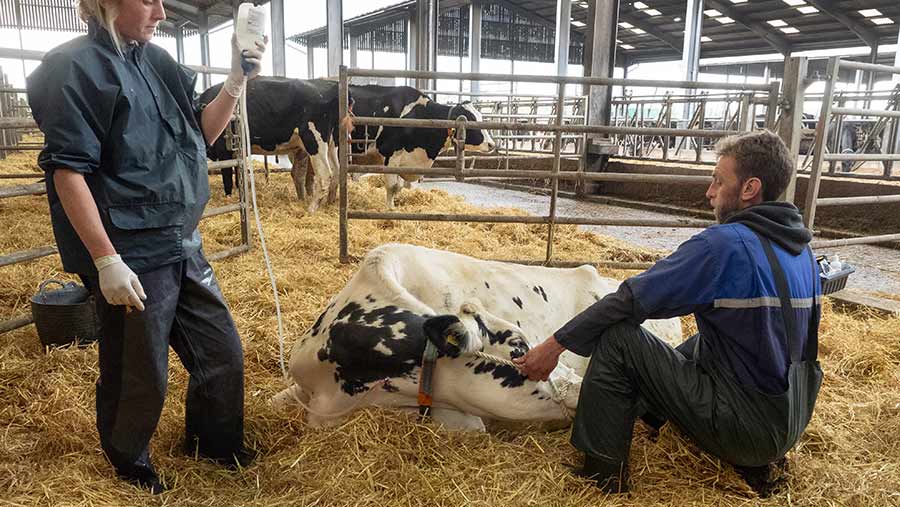
© Kathy Horniblow
- Also give an oral, long-acting calcium drench
Staggers
- Get magnesium into her immediately under the skin. Don’t put it in a vein as this can kill.
Toxic
A cow has such a severe infection that a build-up of toxins has caused her to go down. This tends to come on rapidly and is usually mastitis or metritis.
What are the signs?
- An initially high body temperature will start to go down to normal or low. As soon as temperature drops below normal, the prognosis is worse.
- A hard udder and watery milk are signs of toxic mastitis – strip the udder to assess.
- Cows tend to be suffering from dehydration and may have sunken eyes. Pinch some skin on the neck (SEE PHOTO) – if it takes more than five seconds to return to normal, she is dehydrated.
- A foul vaginal discharge and retained foetal membrane (RFM) can indicate metritis risk.
Treatment
Toxic mastitis
- Administer an appropriate antibiotic and NSAID in the vein – speak to a vet.
- Give fluids with rehydration salts via an oral pump. You may want to call a vet for intravenous fluids in bad cases.
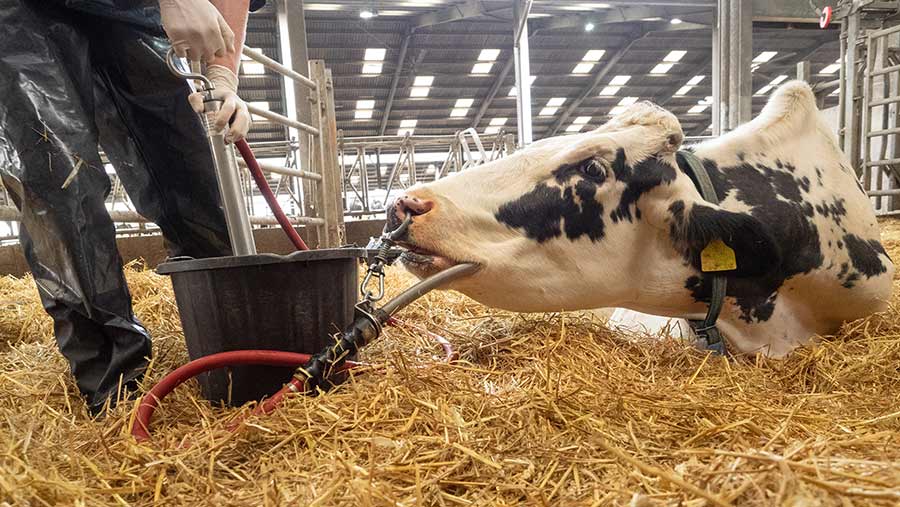
© Kathy Horniblow
- Strip each quarter at least three to four times a day and possibly use oxytocin to aid milk let-down.
Metritis
- Intravenous antibiotics and NSAIDs and fluids.
- Talk to your vet if you have an issue with an RFM.
Best-practice nursing
Lift with care – when moving or lifting a down cow, use a hip hoist and a breast strap on the forks for cow comfort and safety.
If you lift a cow and she shows no attempt to put her weight down, it suggests a poor prognosis and that she shouldn’t be lifted. Don’t just leave a cow dangling.
Lifting is often needed to assess a cow for injuries and as part of treatment for trauma.
If a cow responds well to lifting and is able to bear weight through her legs, lift her three to four times a day.
Temperature check – if you struggle to identify what’s wrong, take her temperature. This is particularly helpful in diagnosing toxic infections.
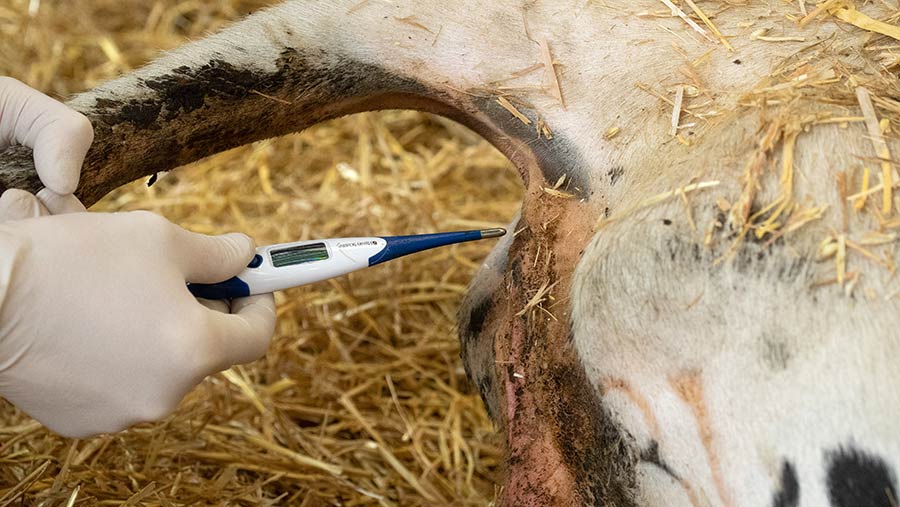
© Kathy Horniblow
Provide a deep, clean bed – aim for 40-50cm of straw or 20-30cm of sand to minimise secondary damage and clean regularly to prevent mastitis infection.
Provide constant access to fresh food and water – putting a water bucket in a tyre can prevent her from knocking it over.
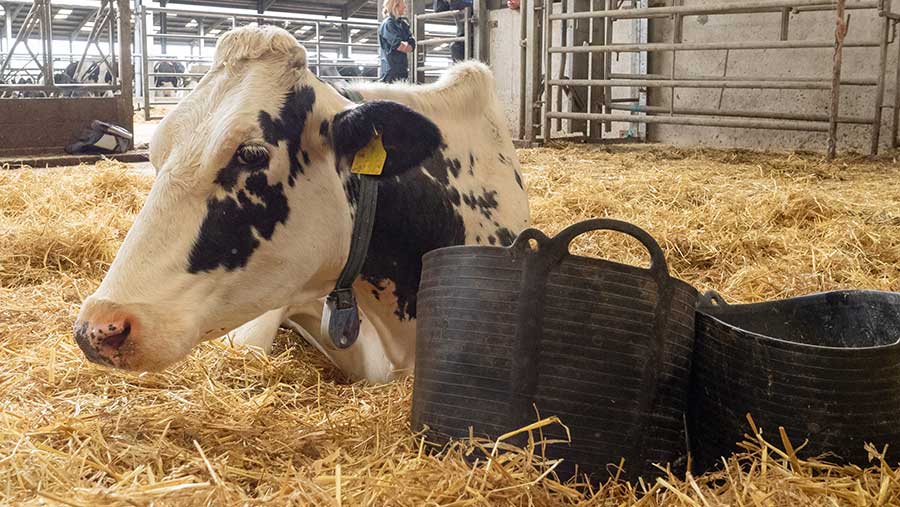
© Kathy Horniblow
Move her – move her from side-to-side and reposition her legs at least four times a day to promote blood flow.
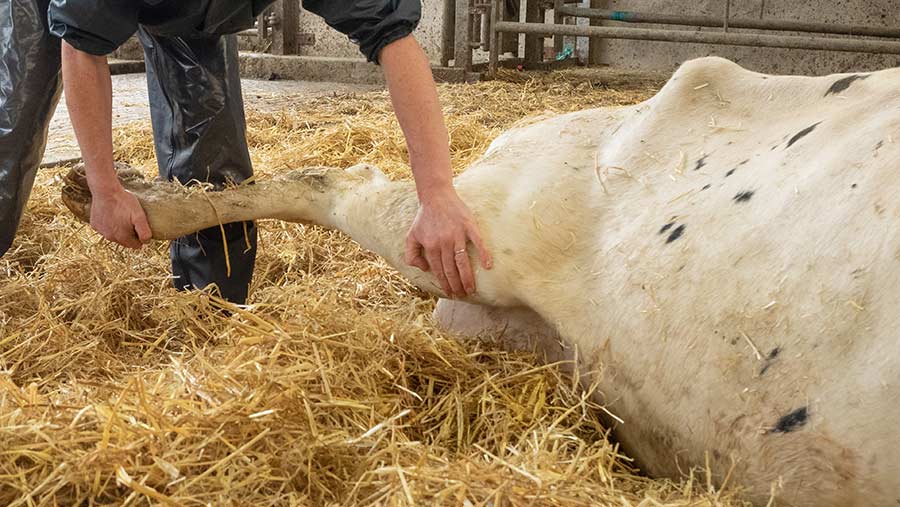
© Kathy Horniblow
Check the udder – A cow that goes down will be more prone to developing mastitis and particularly if she has milk fever.
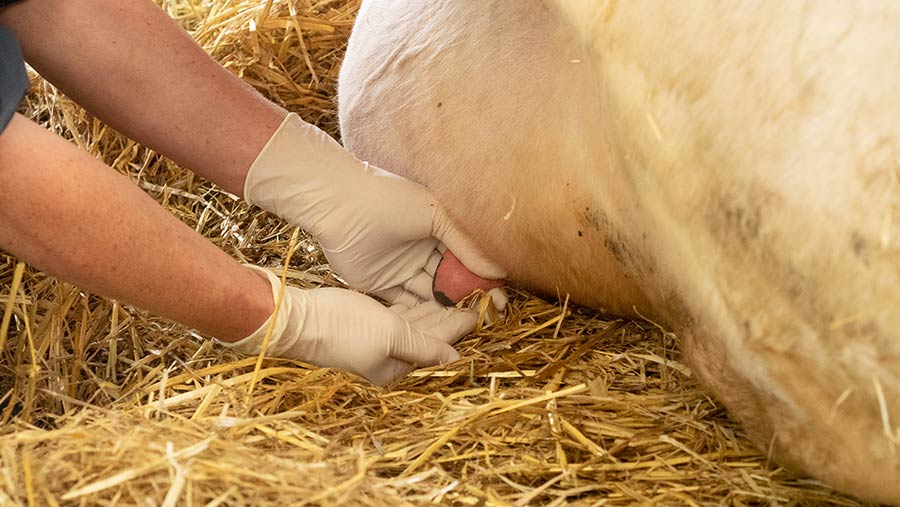
© Kathy Horniblow
Provide protection from adverse weather – such as wind, rain, sun or frost.
Don’t leave it too late to call the vet – if you’re not sure, call the vet. There could be a chance it is something else, like a DA.
Don’t let it drag on. Once a cow is down for more than four days, with no signs of improving, she’s unlikely to get up.
